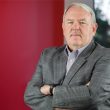Spectrum challenges impact all wireless sectors
Last week, I was in San Diego for the CTIA IT & Entertainment trade show, which has a heavy focus on IT mobility. The big draw was a keynote from FCC Chairman Julius Genachowski, who is by all accounts looking to shake up the wireless industry through inquiries on competition, handset exclusivity and net neutrality.
While he mentioned those things, he also stuck out an olive branch by ensuring the commission will work to smooth the path for mobile broadband deployments. That’s good news to the public-safety community, which increasingly is relying on mobile broadband and looking to build out its own next-generation networks, and to the industrial market looking to capitalize on wireless broadband for machine-to-machine communications.
The chairman said he and the commission understand that mobile broadband will be the growth engine of the industry and the economy. As such, he revealed a four-point plan to ensure the move to the next generation of services has a smooth rollout.
Specifically, the FCC aims to release new spectrum for 4G and beyond as usage continues to skyrocket. “Spectrum is the oxygen of our mobile networks,” he noted. “While it’s adequate now, the long-term picture is very different. … The biggest threat to mobile is the looming spectrum crisis.” While operators are building LTE in the 700 MHz band, that amount of spectrum won’t be enough, as experts predict an onslaught of data traffic, he said.
Part of that plan is reallocating spectrum and promoting more efficient use of spectrum, Genachowski said. “We are going to look at secondary markets and spectrum-flexibility policies,” he said. “We see the benefits of unlicensed spectrum. About 40% of traffic in the home can be offloaded onto unlicensed spectrum. Femtocells offer promise, as well, and we need to incent innovation in these areas.”
Genachowski said the commission will look at ways to reallocate spectrum, warning that reallocation will take years and that there are “no easy pickings on the spectrum chart, but we don’t have a choice.”
The second part of the plan addresses removing the obstacles around mobile-broadband deployments. Genachowski cited tower restrictions in local jurisdictions as one of the biggest obstacles to the swift deployment of networks.
“We heard your call,” Genachowski said. “This issue is ripe for action. We are going to move forward with a shot-clock proposal to speed the process while working with local authorities.” His comment drew applause from the audience.
The other two prongs of the plan involve promoting an open Internet through net-neutrality regulations and ensuring a transparent and competitive market for consumers. However, Genachowski acknowledged that questions remain open about how to put these guidelines into place for wireless networks because of their capacity challenges.
“There are real and relevant differences between wireless and wired networks,” Genachowski said. “Managing wireless networks isn’t the same as managing a fiber network. The rules will reflect that difference.”
Genachowski’s comments should give the public safety and industrial industries such as utilities a lift, but there are also aspects of it that should cause concern.
First the good: Public-safety will benefit from the swift rollout of LTE networks, whether entities are build their own networks or contract with mobile operators. The tower-siting difficulties that impact the commercial sector also impact the public-safety community, as many agencies attempt to collocate their towers with commercial towers to save money and strive for ubiquitous coverage. When it comes to LTE, what’s good for the operator is certainly good for the public-safety LTE operator.
Moreover, utilities looking to roll out smart grids require pervasive wireless coverage, capacity and performance, according to Chris Baker, CIO of San Diego Gas & Electric, who spoke at last week’s show.
“We are the first utility in the U.S. to roll out full two-way communications with in-home control,” Baker said. “We have already rolled out the capability to 1.4 million San Diego gas customers, with full implementation by 2011.” The utility serves 23 million customers altogether.
But Baker said full implementation of the smart grid relies on the wireless industry’s help. His organization will require millions of sensors across thousands of miles of pipes that span the desert and mountainous regions. The only way to monitor the entire area is via mobile broadband networks.
What could potentially become most disconcerting, however, is the spectrum issue. Allocating more spectrum to commercial operators means other users get the squeeze, usually government entities. The need for more spectrum in the commercial sector comes at a time when public safety and utilities need more spectrum, too.
Public safety, for instance, has long had difficulty finding available 800 MHz airwaves in urban areas, although the availability of interleaved channels vacated by Sprint Nextel in the rebanding process provides new hope in this arena. Even at 700 MHz — spectrum that became available nationwide only this summer, although it has been used in some parts of the country for years — airwaves designated for narrowband voice applications already have become scarce in states like Colorado, which has a statewide system operating on the frequencies.
The Utilities Telecom Council has been lobbying the FCC for at least 30 MHz of dedicated spectrum to support utilities’ wireless network applications, such as a national interoperable smart grid. Currently, available spectrum is scattered across small band segments: land mobile from 50 MHz–512 MHz, plus 800 MHz and 900 MHz; unlicensed in 900 MHz; point to multipoint in parts of 900 MHz; and fixed service from 4 GHz–11 GHz.
Earlier this year, Jill Lyon — then UTC vice president and general counsel — said there is no dedicated spectrum other than six channel pairs in the 900 MHz band for railroads that total just 150 kHz.
“We’re having trouble maintaining the reliability we have now, and we have to do more with less spectrum,” Lyon told me earlier this year.
Last year, Industry Canada announced it would allocate the 1,800 MHz to 1,830 MHz band for radio systems carrying traffic exclusively for maintenance and management of the electrical grid. UTC is hoping for the same frequencies.
Spectrum reallocation will be a painful yet necessary process, as airwaves are grossly underutilized in this country. I just hope that public safety and utilities get the same opportunities as their commercial counterparts.

















